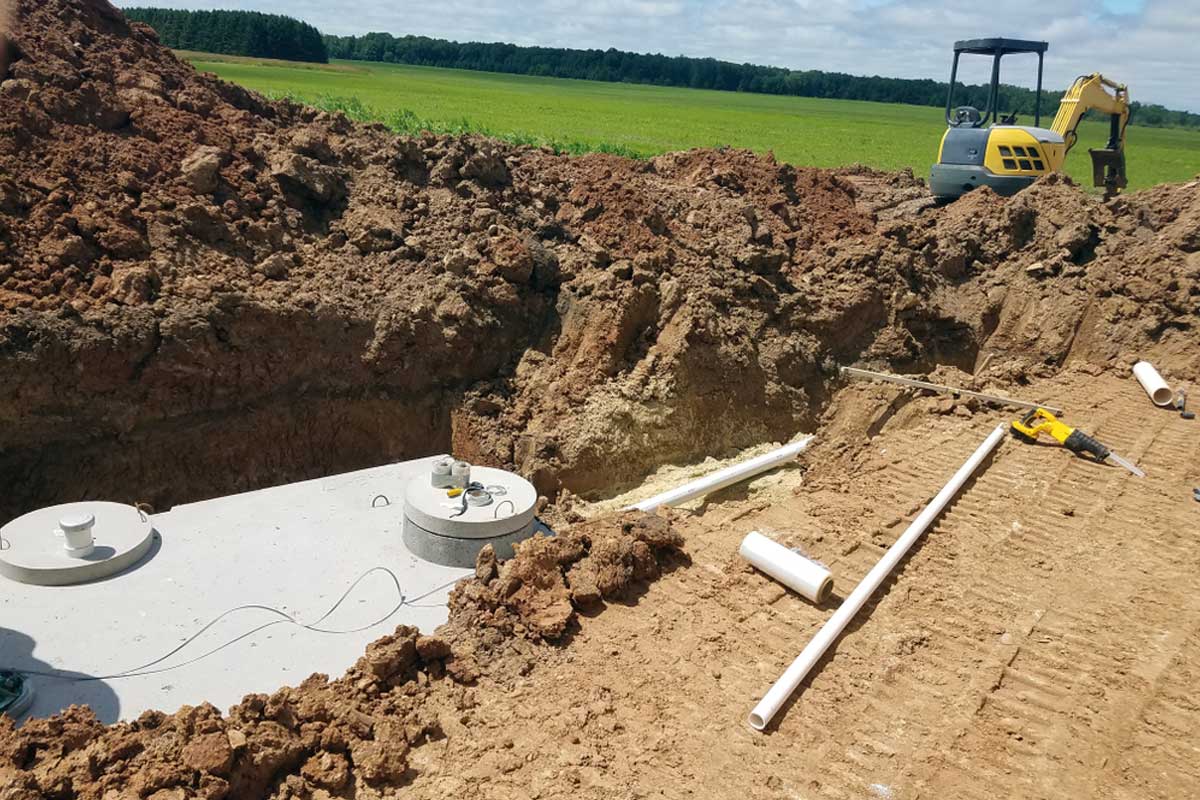Understanding the cost of maintaining a septic tank is vital. If you’re planning to replace or upgrade a septic system, knowing the cost involved will aid you in creating an estimate and avoid unexpected costs. There are various factors that contribute to the septic tank replacement cost.

The price of installing the septic tank as well as the leach field can differ greatly dependent on a variety of key elements. The size of septic systems is one of the most crucial factors to be considered. The price for a septic system will be greater for larger homes or buildings that consume more water. In addition, the soil conditions and topography of the area can affect the complexity of the installation process, and consequently, the cost. In the event of challenging soil conditions, it may be necessary to use more excavation or special treatment techniques, which will make the costs more expensive.
The price of a septic system could also be affected by the selection of septic tanks and leach fields. Different types of materials and designs come with varying prices. Concrete tanks that are traditional tend to be less expensive than other options such as plastic or fiberglass tanks. Furthermore, the most advanced treatment systems or alternatives that are environmentally friendly may come at a higher cost but also offer benefits including improved water treatment and conservation.
While the initial cost of installing an septic and leach field tanks is an expensive financial investment, it is important to take into consideration long-term costs for maintenance and replacement. Septic tanks can last of between 25 and 30 years, dependent upon factors like usage maintenance, the materials employed. Over time, the septic tank may require repair or replacement. When calculating the price for replacing a septic tank it’s crucial to consider not only the tank itself but also the associated labor as well as any required upgrades in order to keep up with the latest standards.
The cost of replacing the septic can differ based on the size and type of the new tank, and also the difficulty of the installation process. In some cases, it may be necessary to excavate the tank and dispose of it in a proper manner and then prepare the area to allow for the new installation. Moreover, if there have changed in the regulations in the past few years it is possible that additional costs will be needed to bring the new septic system in line with the latest regulations.
To ensure a smooth replacement procedure and avoid costly unexpected expenses It is essential to conduct regular inspections of the septic system and regular maintenance. Regular inspections enable earlier detection of issues which could lead to quick repairs and prolong the life of the septic system. It is important to regularly run the tank to prevent the accumulation of solids.
If you are planning a replacing or installing a septic tank It is recommended to get quotes from multiple reputable contractors. Comparing these estimates can provide a clearer understanding of the costs in your area and help you make an informed decision. In addition, you should ask about any warranties or guarantees that the contractor offers for their work as well as the materials employed.
Knowing the cost of replacing a septic tank as well as the overall costs of septic systems is important for homeowners and property owners. By considering factors such as the size, material, soil conditions, and the possibility of long-term costs it is possible to plan for the installation or replacement of a septic tank and leach field. To prolong the life of your septic tank while minimizing future expenses, periodic inspections, maintenance and appropriate maintenance are essential. Make sure to invest in a functioning septic system is not just about ensuring proper wastewater management but can also improve the overall functionality and value of your property.